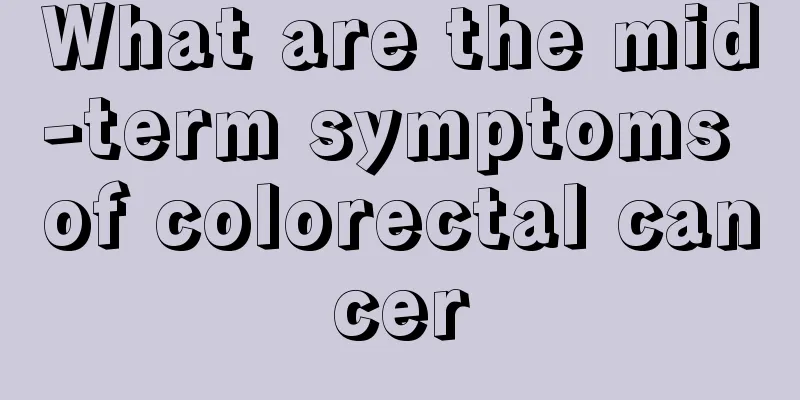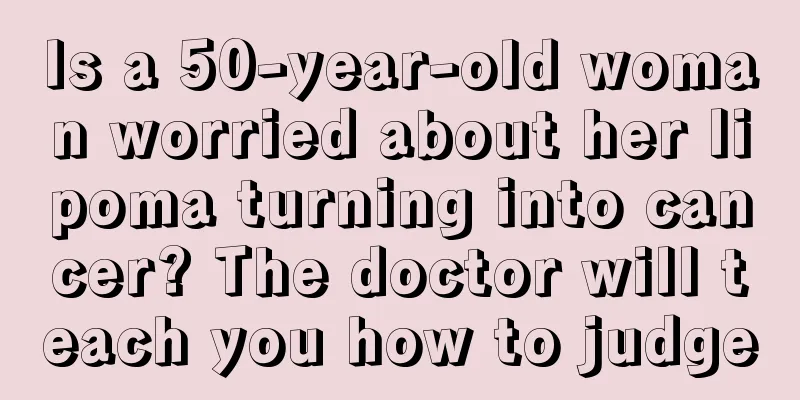What are the mid-term symptoms of colorectal cancer

|
When colorectal cancer develops to a certain extent, certain symptoms will appear. Therefore, we must understand the symptoms of colorectal cancer as early as possible so that we can better detect colorectal cancer and control the development of the disease as early as possible, so that we can better treat the disease. So the following is a detailed introduction to the symptoms of colorectal cancer. 1. Right colon cancer The prominent symptoms are abdominal mass, abdominal pain, and anemia. Some patients may have mucus or mucus-bloody stools, frequent bowel movements, abdominal distension, and intestinal obstruction, but these are far less common than in the left colon. The right colon has a wide intestinal cavity, and the primary cancer is often very large when discovered. Ulcers and masses are more common. Many patients can feel a mass in the right abdomen. Unless the cancer directly affects the ileocecal valve, intestinal obstruction is generally rare. Since the stool is still semi-fluid and thin in the right colon, there is less bleeding caused by the friction of the stool with the cancer. Most of the bleeding is caused by necrosis and ulcers of the cancer. Since the blood and feces are evenly mixed and not easily detected, it can cause long-term chronic blood loss. Patients often seek medical treatment due to anemia. Abdominal pain is also common, often dull pain, which is mostly caused by the invasion of the mass into the intestinal wall. Secondary infection of cancer ulcers can cause local tenderness and systemic toxemia. 2. Left colon cancer The prominent symptoms are changes in bowel habits, mucus or bloody stools, intestinal obstruction, etc. The left colon cavity is narrow, and the primary cancer often grows in a circular infiltrative manner, which can easily cause intestinal narrowing, so constipation is common. Subsequently, due to the increase in fluid accumulation in the upper intestinal cavity and hyperperistalsis, diarrhea may occur after constipation, and the two often appear alternately. As the stool enters the left colon, it gradually changes from a paste to a clumpy state. Therefore, visible blood in the stool caused by friction between the stool and the lesion is common. Patients often seek medical treatment early, and anemia caused by long-term chronic blood loss is not as prominent as that in the right colon. Intestinal obstruction caused by cancer infiltration around the intestinal wall and narrowing of the intestinal cavity is mostly chronic and incomplete. Patients often have long-term constipation and paroxysmal abdominal pain. Since the obstruction is located at a lower location, vomiting is often not obvious. 3. Rectal cancer The prominent symptoms are blood in the stool, changes in bowel habits and concomitant symptoms caused by infiltration of advanced cancer. The location of the carcinoma in situ is relatively low, and the feces are relatively hard. The cancer is easily rubbed by the feces and easily causes bleeding. Most of the bleeding is bright red or dark red, and it does not mix with the formed feces or is attached to the surface of the fecal column, leading to misdiagnosis. |
<<: Can I get pregnant during chemotherapy for colorectal cancer
>>: What are the symptoms before colorectal cancer?
Recommend
Can essential oil of Fengyou delay ejaculation?
Many men are not satisfied with the duration of t...
This is the reason why my stool turned black after taking Chinese medicine
In daily life, there are many chronic diseases th...
What does color Doppler ultrasound of the kidneys, ureters, and bladder check?
In daily life, many people go to the hospital bec...
What is the best filling for pillows
In life, many people like to use pillows, because...
What are the causative factors of liver cancer? The formation of liver cancer is related to three factors
China is a country with a high incidence of hepat...
Will I get sick if I wash my hands frequently?
Everyone knows that we need to wash our hands bef...
Should thyroid cancer be treated with surgery?
Whether thyroid cancer requires surgery depends m...
Which type of colorectal cancer is most likely to occur
With the development of colorectal cancer treatme...
How to quickly expel the contrast agent
From a clinical perspective, there are two types ...
What are the best ways to detoxify your body?
We all know that the human body absorbs nutrients...
How long after surgery can I dye my hair
Nowadays, many women like to dye their hair into ...
How to get rid of hiccups quickly?
Many people will burp after meals, and the reason...
What is an overbite
Many of our friends may not be familiar with the ...
What's wrong with the small red bumps on the skin
Normally, we will encounter many different sympto...
The fastest way to treat a sore throat
The heating in the room is very hot now, but it i...









